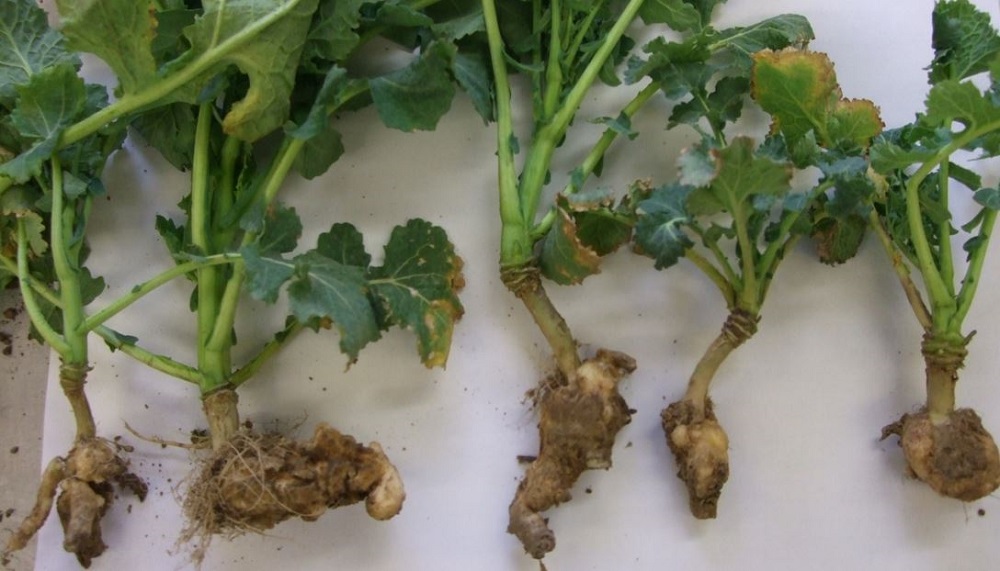Please click here to access the main AHDB website and other sectors.
- Home
- Knowledge library
- An introduction to clubroot in oilseed rape and field brassicas
An introduction to clubroot in oilseed rape and field brassicas
Clubroot affects all cultivated and wild cruciferous plants. Through understanding the pathogen’s basic biology, it is possible to build an integrated pest management (IPM) approach to control this increasingly important global disease.
Oilseed rape disease management guidance
Which crops get clubroot?
Oilseed rape and all vegetable brassica species are affected. Susceptible broad-acre arable crops include turnip, swede, Brussels sprouts, cauliflower, calabrese and mustard. Numerous weed species, such as charlock and shepherd’s-purse, are also common hosts.
How does clubroot affect crops?
The soilborne pathogen that causes clubroot (Plasmodiophora brassicae) survives for up to 15 years in the soil. Infected roots form characteristic galls, whhich reduce nutrient and water uptake in roots and lead to lower yields.
In recent years, the UK has experienced milder and wetter winters that favour the pathogen's movement – helping to contribute to the spread of this disease. Even farms with no history of clubroot disease are starting to experience problems.
Clubroot can severely affect young plants, causing significant losses. Although clubroot yield losses may not be significant at a national level, losses of 10% are common in infected oilseed rape fields. Yield losses of 0.3 t/ha per 10% of oilseed rape plants infected have been reported. In extreme circumstances, total crop failure is possible.
The disease also affects older plants. In horticultural crops this is particularly problematic, as it may result in erratic plant maturity and disrupt harvesting schedules.
How to manage clubroot in brassica crops
At present, there are no options for controlling clubroot with fungicides or biocontrols. The key to management is to understand clubroot pressures, restrict its spread and make informed rotational/varietal decisions. In particular, it is important to base decisions on the long-term profitability and sustainability of a field, not on a single season’s predicted margin.
Understanding clubroot pressure
Early detection of clubroot infection is extremely important. As patches of poor growth or establishment can have multiple causes, it is important to investigate them and establish the cause. Mapping affected areas can help guide management decisions. An understanding of the field factors that favour the pathogen is also essential.
How to identify clubroot symptoms and map infested land
Restricting the spread of clubroot
Clubroot can spread in several ways, including via soiled machinery and infected organic material. Learn about the routes of spread and the simple management steps to prevent contamination.
Clubroot management in oilseed rape: field factors
Making informed rotational/varietal decisions
Short rotations increase the soil’s clubroot inoculum burden. Additionally, frequent use of clubroot-resistant varieties is likely to increase selection pressure on the pathogen population and may lead to the emergence of new virulent strains able to infect previously resistant crops.




.JPG?v=637828178580000000)

.JPG?v=637828178580000000)
